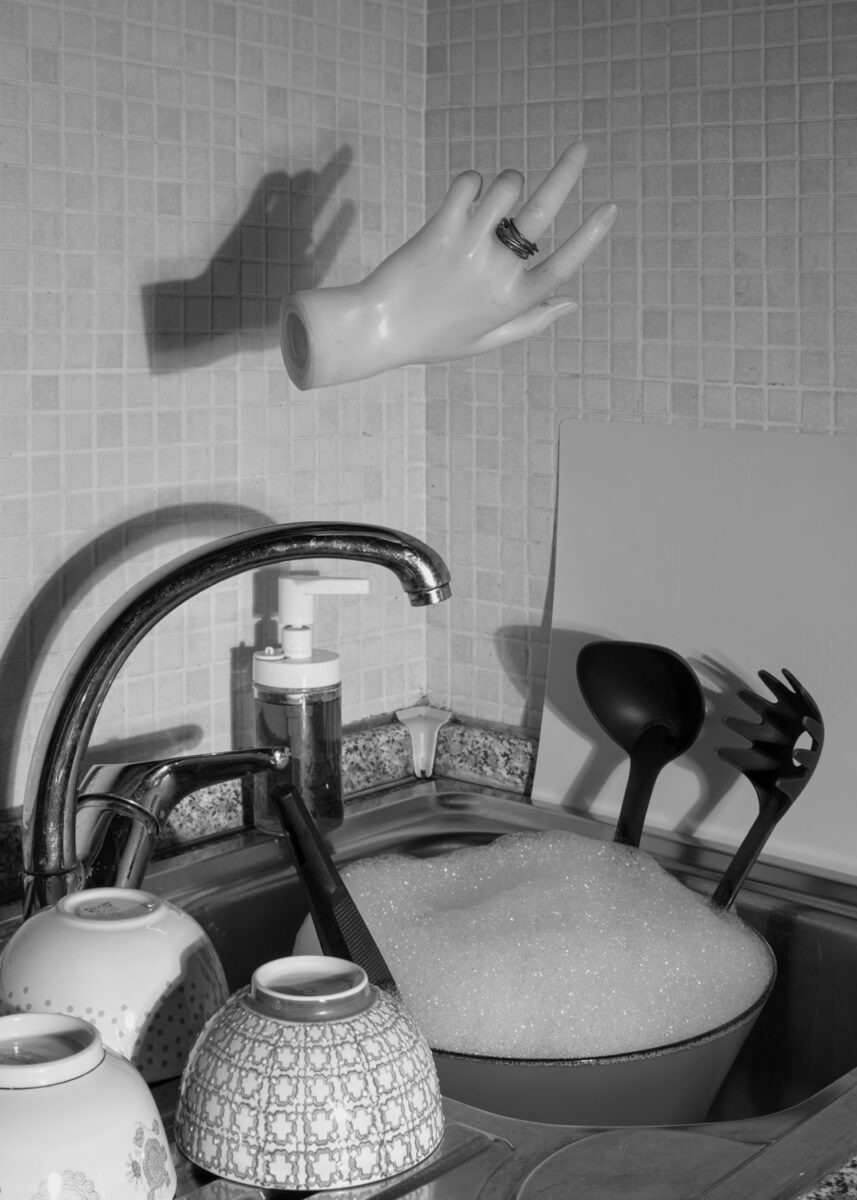How does it feel to leave home? We might take our belongings to a new place but the memories we’ve made there linger in the ceilings, cracks and carpets. Photographer Luca Iovino (b. 1983) explores this experience in his debut monograph, The Name We Hold, published by Disko Bay. Before leaving his home, the Italian artist decided to take a closer look at the surroundings with which he had become so familiar. He says: “My family, the round mirror, the ball: how could I move them and extract them from their familiar universe? This reflection surprised me, as imagination infiltrated the ordinary.” The process allowed him to “confront the fear of staring over.” Iovino’s work primarily explores the relationship between space and people, establishing connections between the various elements that make up our lives. The Name We Hold offers a tender recollection of the memories that made his home so special. At the same time, it’s a collection about embracing change. Instead of just filling the book with nostalgic portraits and still lifes, Iovino also subverts the everyday with surprising compositions in dramatic black-and-white.


Still life pieces make up a significant portion of The Name We Hold. Everyday, we interact with numerous objects – from our phones to our clothes. Iovina paints familiar items in a new light by balancing them in unusual ways. Surreal scenes might make many recall the minimalist work of Priscilla Ong or the abstract miniatures of Sarah Doyle. However, it is the stark black-and-white that sets Iovina apart from more colourful contemporaries. On one page, a knife balances on its point over a hole that ruptures the centre of a wooden table. Elsewhere, books form the walls and roof of a makeshift house. Another striking piece spotlights an assortment of six rocks. Three stand on the grey surface whilst the others levitate or balance magically. It brings to mind photographs from Aesthetica Art Prize alumnus Omar Torres, who shows rocks held up by delicate glass. Scenes like these inspire curiosity, as we look at familiar possessions anew.


Iovino does more than breathe life into inanimate objects. Many figures fill the pages of The Name We Hold. A toddler gazes through a magnifying glass. One woman looks at a spot beyond the bounds of the frame, one eye covered by a hexagonal mask. A mother holds an adorable baby, who peers out from the place her neck and shoulder meet. In this way, we catch loving glimpses of the people Iovino holds dear. Other times he uses hands to suggest human presence, whilst directing our gaze to what they hold. One pair contain a tangle of wires that catch the light in mesmerising ways. Another disembodied set hold a mirror aloft, which reflects an expanse of grey. These images are scattered throughout the collection to show the people who have made the space lively. The experiences they shared live on through each spread.


The Name We Hold is charming, dark, funny and enchanting all at once. The suspended knife gives a sense of danger whilst the surreal shots of mirrors contribute to the mysterious quality of the book. Iovino elevates common household objects – sometimes literally – and captures core memories made in his old home. In this way, he conveys the complex feelings of moving. We can become comfortable in settings we have spent a long time in and get used to everything staying the same. These pieces invite us to welcome change. Throughout the book, everyday objects – knives, mirrors and cups – take on a life of their own. It’s a reminder that we have the power to make the world fresh and exciting – just by changing how we see.
Luca Iovino: The Name We Hold | Disko Bay
Words: Diana Bestwish Tetteh
Image Credits:
- Luca Iovino, The Name We Hold (2024). Courtesy of the artist and Disko Bay.





